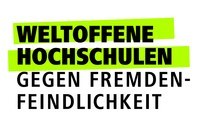| Telefon: | +49 261 287 - 2259 |
| E-Mail: | mhopp(at)uni-koblenz.de |
| Web: | uni-koblenz.de/de/mathematik-n... |

Prof. Dr. Marie-T. Hopp
Lebenslauf
Geburtsdatum/-ort | 23.08.1992 in Köln |
09/2003 - 03/2012 | Martin-Butzer-Gymnasium Dierdorf |
04/2012 - 09/2017 | Studium der Fächer Chemie und Biologie (B. Ed. und M. Ed.) an der Universität Koblenz-Landau, Campus Koblenz |
seit 02/2016 | Jurorin beim Wettbewerb "Jugend forscht" in Koblenz und Remagen |
04/2017 - 09/2017 | Masterarbeit am Pharmazeutischen Institut der Universität Bonn bei Prof. Dr. D. Imhof zum Thema "Einfluss von Häm auf Proteine der Blutgerinnungskaskade" |
10/2017 - 06/2021 | Promotionsstudium am Pharmazeutischen Institut der Universität Bonn unter der Leitung von Prof. Dr. D. Imhof |
04/2020 - 03/2023 | Lehrbeauftrage für Biochemie ("Biochemie 1", "Biochemie 2") an der Universität Koblenz-Landau, Campus Koblenz |
06/2021 | Promotion zur Dr. rer. nat. im Fach Pharmazie (Prädikat: summa cum laude/Note: 0,0) zum Thema: "Investigation of the procoagulant role of labile heme under hemolytic conditions" |
07/2021 - 10/2022 | Postdoktorandin in der Pharmazeutischen Biochemie und Bioanalytik an der Universität Bonn |
11/2021 - 10/2022 | Lehrbeauftrage für Biochemie ("Grundlagen der Biochemie und Physiologie") an der Universität Trier |
11/2022 - 03/2023 | DFG-geförderte temporäre Principal Investigator am Pharmazeutischen Institut der Universität Bonn |
seit 04/2023 | Juniorprofessorin (W1) für Organische Chemie – Bioorganische Chemie an der Universität Koblenz |
seit 05/2025 | Lehrbeauftragte an der Hochschule Fresenius Idstein (Bioanalytical Chemistry and Pharmaceutical Analysis) |





